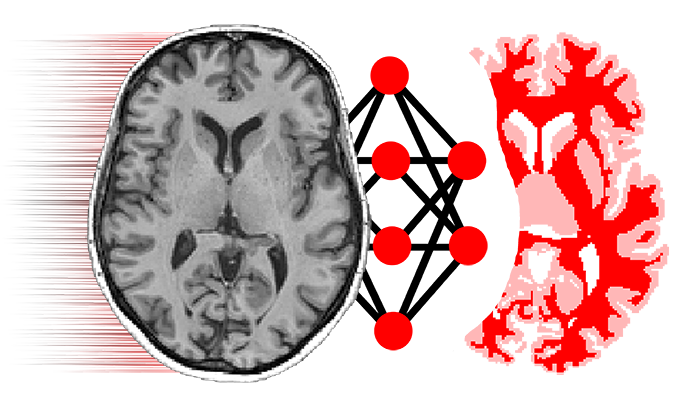niftynet.network.dense_vnet module¶
-
DenseVNetDesc¶ alias of
DenseVNetParts
-
class
DenseVNet(num_classes, hyperparameters={}, architecture_parameters={}, w_initializer=None, w_regularizer=None, b_initializer=None, b_regularizer=None, acti_func='relu', name='DenseVNet')[source]¶ Bases:
niftynet.network.base_net.BaseNet- implementation of Dense-V-Net:
- Gibson et al. Automatic multi-organ segmentation on abdominal CT with dense V-networks
### Diagram
DFS = Dense Feature Stack Block
- Initial image is first downsampled to a given size.
- Each DFS+SD outputs a skip link + a downsampled output.
- All outputs are upscaled to the initial downsampled size.
- If initial prior is given add it to the output prediction.
- Input
- –[ DFS ]———————–[ Conv ]————[ Conv ]——[+]–>
- | | |
- —–[ DFS ]—————[ Conv ]—— | |
- | |
- —–[ DFS ]——-[ Conv ]——— |
- [ Prior ]—
The layer DenseFeatureStackBlockWithSkipAndDownsample layer implements [DFS + Conv + Downsampling] in a single module, and outputs 2 elements:
- Skip layer: [ DFS + Conv]
- Downsampled output: [ DFS + Down]
-
DenseFSBlockDesc¶ alias of
DenseFSDesc
-
class
DenseFeatureStackBlock(n_dense_channels, kernel_size, dilation_rates, use_bdo, name='dense_feature_stack_block', **kwargs)[source]¶ Bases:
niftynet.layer.base_layer.TrainableLayerDense Feature Stack Block
- Stack is initialized with the input from above layers.
- Iteratively the output of convolution layers is added to the stack.
- Each sequential convolution is performed over all the previous stacked channels.
Diagram example:
stack = [Input] stack = [stack, conv(stack)] stack = [stack, conv(stack)] stack = [stack, conv(stack)] … Output = [stack, conv(stack)]
-
DenseSDBlockDesc¶ alias of
DenseSDBlock
-
class
DenseFeatureStackBlockWithSkipAndDownsample(n_dense_channels, kernel_size, dilation_rates, n_seg_channels, n_downsample_channels, use_bdo, name='dense_feature_stack_block', **kwargs)[source]¶ Bases:
niftynet.layer.base_layer.TrainableLayerDense Feature Stack with Skip Layer and Downsampling
- Downsampling is done through strided convolution.
- —[ DenseFeatureStackBlock ]———-[ Conv ]——- Skip layer
——————– Downsampled Output
See DenseFeatureStackBlock for more info.
-
class
AffineAugmentationLayer(scale, interpolation, boundary, transform_func=None, name='AffineAugmentation')[source]¶ Bases:
niftynet.layer.base_layer.TrainableLayerThis layer applies a small random (per-iteration) affine transformation to an image. The distribution of transformations generally results in scaling the image up, with minimal sampling outside the original image.
-
__init__(scale, interpolation, boundary, transform_func=None, name='AffineAugmentation')[source]¶ ” scale denotes how extreme the perturbation is, with 1. meaning
no perturbation and 0.5 giving larger perturbations.- interpolation denotes the image value interpolation used by
- the resampling
boundary denotes the boundary handling used by the resampling transform_func should be a function returning a relative transformation (mapping <-1..1,-1..1,-1..1> to <-1..1,-1..1,-1..1> or <-1..1,-1..1> to <-1..1,-1..1>)
-
spatial_dims¶
-
-
class
Affine2DAugmentationLayer(scale, interpolation, boundary, transform_func=None, name='AffineAugmentation')[source]¶ Bases:
niftynet.network.dense_vnet.AffineAugmentationLayerSpecialization of AffineAugmentationLayer for 2D coordinates
-
spatial_dims= 2¶
-
-
class
Affine3DAugmentationLayer(scale, interpolation, boundary, transform_func=None, name='AffineAugmentation')[source]¶ Bases:
niftynet.network.dense_vnet.AffineAugmentationLayerSpecialization of AffineAugmentationLayer for 3D coordinates
-
spatial_dims= 3¶
-
